सिंगापुर के परिवारों द्वारा विरासत में मिली रेंडांग तकनीकें
40 मिनट पढ़ें सिंगापुर के घरों से विरासत में मिली रेंडांग की तकनीकों की खोज—रेम्पाह के संतुलन, धीमी आंच पर पकना, और केरिसिक—to स्वाद, स्मृति, और बहु-सांस्कृतिक विरासत को संरक्षित रखने के लिए। अक्टूबर 14, 2025 18:07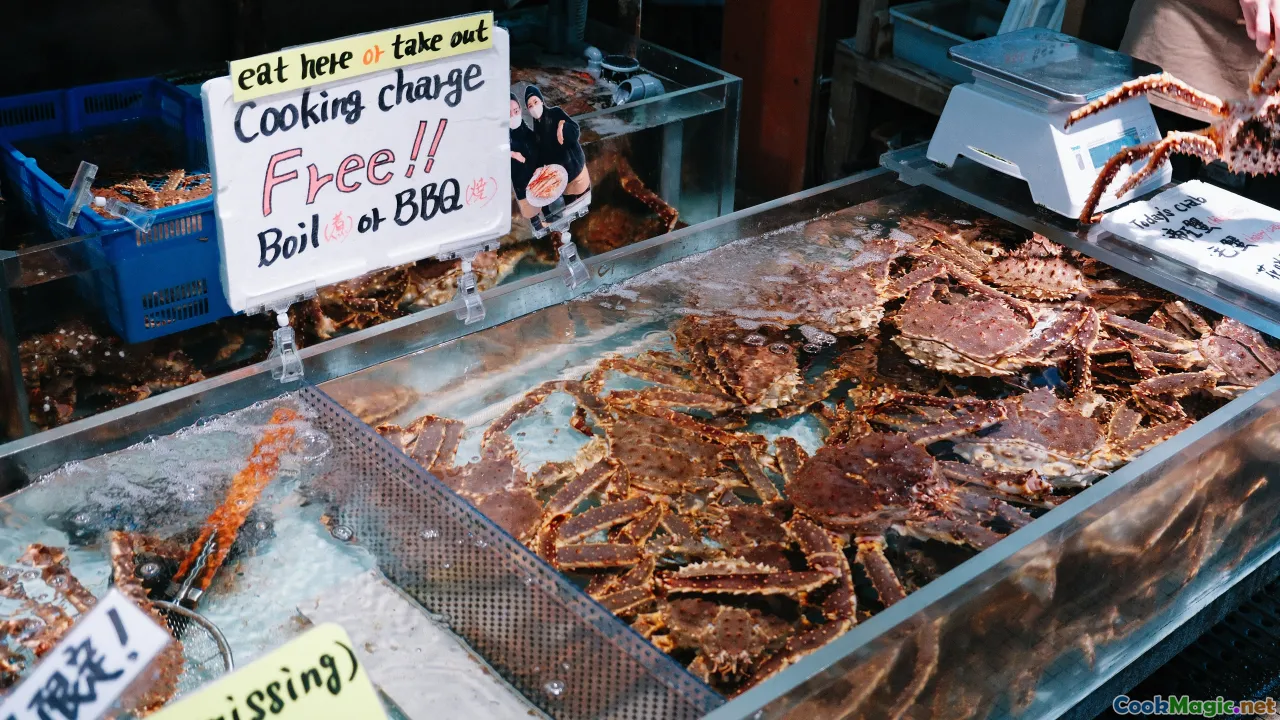
If you walk past the halal butcher at the Haig Road market in the week before Hari Raya, you’ll see a quiet choreography unfolding. An aunty with henna-smudged fingertips taps a beef shin, judging bounce and marbling. A teenage boy ferries packets of spice past bowls of grated coconut. Someone, somewhere, is toast-sweetening kerisik to the color of old teak. This is how rendang begins in Singaporean homes—not with a recipe card, but with people, errands, and a community of know-how held together by memory and the promise of a meal that stains the fingertips with fragrant oil.
A Morning at Geylang Serai, Where Rendang Begins

At 6:30 a.m., the floor is slick with melting ice and coconut water at Geylang Serai Market. The coconut man—every market has one—feeds mature halved nuts through a grinder, letting snowy curls fall into a high basin. He smiles when you ask for “ikut rendang”—the grind for rendang—meaning you want a slightly coarser shred for richer milk, good for squeezing twice. Clusters of women in tudung consult each other’s shopping list in rapid-fire Malay: serai (lemongrass), lengkuas (galangal), kunyit (fresh turmeric), daun limau purut (kaffir lime leaves), daun kunyit (turmeric leaves), asam keping (dried tamarind slices). The stall selling bumbu pre-mixes is already doing brisk business, but you’ll hear a few stern voices: “Buat rempah sendiri lah.” Make your own paste. On festivals, shortcuts are frowned upon.
A stall at the corner sells daun kunyit bound with raffia, their scent a sharp, green echo of turmeric. A red-eyed butcher pulls a slab of shin from the hook, chalky marrow bones peeking from the ends. He knows: the shin is for open-house rendang, the kind that can sit softly on a table for hours and only deepen in flavor. He is already slicing the pieces into thick, meaningful chunks—too small and the meat dries before the gravy reduces; too big and it’s rude to the elders who will eat gently, with fingertips.
The air carries the perfume of grinding chilies, a sting of fresh turmeric that will outsmart your fingernails for days, and the shattering sweetness of coconut milk steaming up from hot pans. This is the smell of the season, but also the smell of a tradition that made a home out of migration. Rendang in Singapore speaks Minangkabau, Malay, Peranakan, and the dialect of our HDB kitchens.
What Singaporean Families Mean by "Rendang"

Ask three families and you’ll be told five versions of rendang. That’s because rendang in Singapore is not a singular dish, but a vocabulary. At the heart is patience married to coconut fat, a rempah you can smell from the void deck, and the moment of pecah minyak—when the oil separates from the spice paste and the dish announces itself with a glossy, volcanic simmer.
Historically, the dish is a Minangkabau export, traversing the Straits with migrants from West Sumatra. Through the port of Singapore and the Malay kampongs it settled into, rendang picked up our island’s groceries and habits. In the lanes behind Sultan Mosque, Rumah Makan Minang still serves a version unapologetically West Sumatran: dark, almost black from hours of reduction, with a silken, toasted coconut backbone. Walk a few doors down to Hajjah Maimunah on Jalan Pisang and you’ll find a subtler, more Malay rendition, sometimes silkier, sometimes with a whisper of sweetness that flatters rice without elbowing it.
There’s also Warong Nasi Pariaman along North Bridge Road, claiming the mantle of one of the city’s oldest nasi padang eateries, where rendang sits in steaming trays, waiting. These restaurants are benchmarks, but any Malay family with a long memory will tell you that the best rendang is at home, on the second day, when it has slept and woken up tasting of something older and better than itself.
In Singapore’s kitchens, you’ll meet:
- Rendang Daging: बीफ का क्लासिक संस्करण, जिसकी मजबूती दीर्घकालीन उच्च ताप पर बेहतर रहती है।
- Rendang Ayam: चिकन रेंडांग, अक्सर थोड़ा कम सूखा बनता है, बच्चों और हल्के गोश्त पसंद करने वालों में प्रिय।
- Rendang Tok: Perak शैली का चचेरा भाई, गहरा और लगभग पाउडरी-ड्राय, जो सुगंधित मसालों से भरा होता है; कुछ परिवार जो Causeway के पार मूल के हैं, यहाँ इसे जारी रखते हैं।
- Rendang Paru or Hati: फेफड़ा या जिगर वाला रेंडांग, सशक्त और टेक्सचर-युक्त, उन दिनों की याद जो कभी कुछ भी व्यर्थ नहीं करता था।
- Peranakan-tinged rendang: कभी अधिक धनिया के बीजों के साथ सुगंधित, कभी gula Melaka के साथ नरम; Peranakan घरों में, शरीर के लिए candlenut का जोर देखा जा सकता है।
The differences are not academic. They are personal, carried in wooden spoon handles worn smooth by long stirring, in the kerisik toasted to a shade that makes a niece frown—“too dark, Mak”—until she tastes it and the past silences her.
The Family Rempah: Ratios, Rhythm, and Pecah Minyak
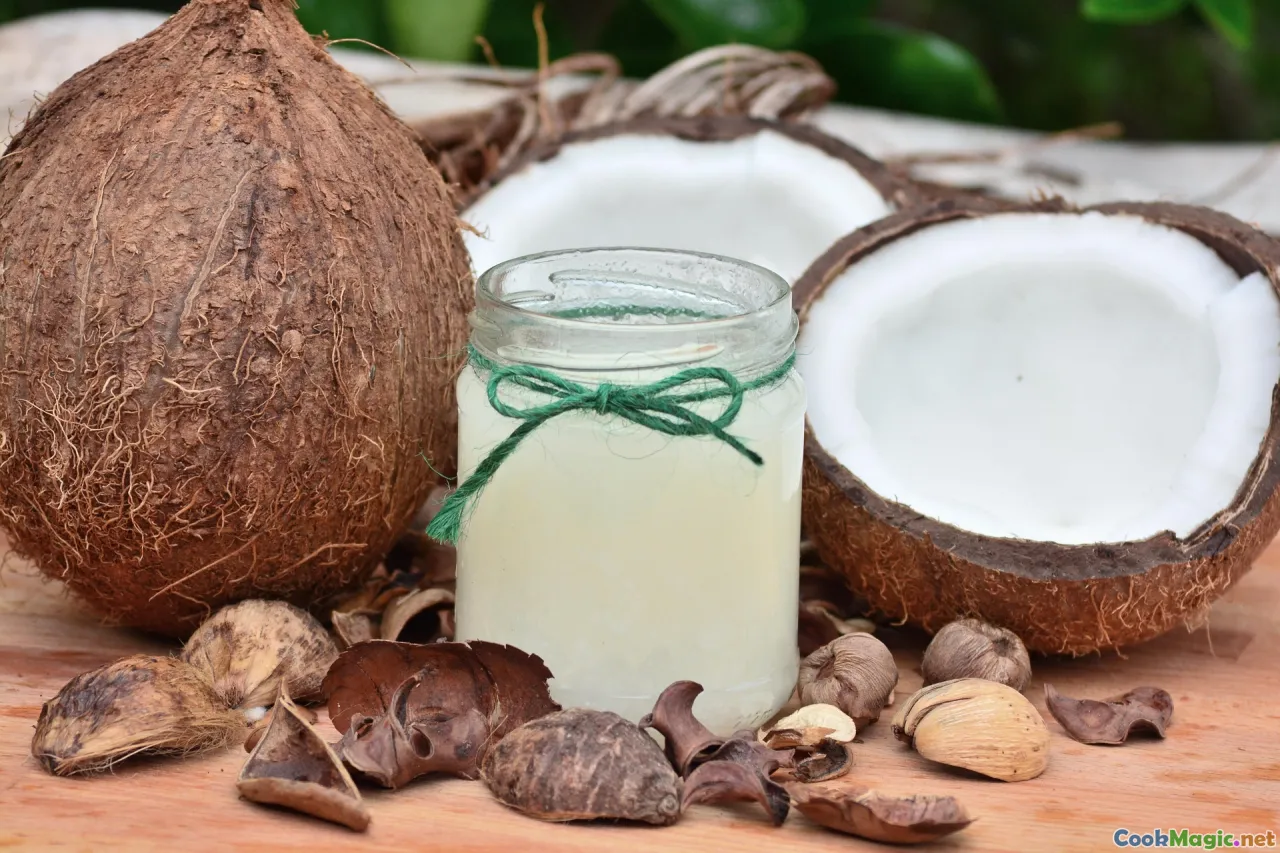
Every rendang begins with a rempah—literally “spice,” but also the paste that grows into the dish. Here, families become fiercely specific. A composite rempah recipe I collected from three aunties at Haig Road:
- 20 dried chilies, snipped and deseeded, softened in hot water until supple (choose the chili garing for redness, add a few cili padi for heat if your family likes a kick).
- 6 fresh red chilies for brightness.
- 8 shallots (or a hard, slap-dash fistful worth about 250 g), peeled.
- 6 cloves garlic.
- 40 g fresh turmeric, scraped and sliced.
- A thumb of galangal (50–60 g), peeled and sliced.
- 2 stalks lemongrass, bruised white parts only, sliced fine.
- 1 tablespoon coriander seeds, 1 teaspoon cumin seeds, 1 teaspoon fennel seeds, dry toasted until fragrant.
- 5 candlenuts (buah keras), toasted lightly.
- Salt to taste, added later to coax water out during tumis.
Some families add a half-inch of ginger for warmth; others forbid it, claiming it muddles the galangal’s resonant, piney tenor. This is where the batu giling—the old granite roller and slab—enters the conversation. The stone is heavy, primitive, and perfect. It crushes cells; it doesn’t merely cut them. The difference? Aroma distills without blades heating and aerating the paste; the texture is slightly coarse, which helps the rempah “catch” the oil—tiny crags that brown and later cling to meat.
If you must use a blender (many of us do in HDB flats), do it with respect:
- Cube the aromatics small so the blades shear cleanly.
- Add minimal water. Better yet, add a slick of oil instead of water for a richer, faster pecah minyak later.
- Pulse in bursts; don’t liquefy. You want a wet rubble, not soup.
Pecah minyak is the ceremony. You’ll heat a generous amount of oil—some swear by coconut oil for deeper resonance, others a neutral oil to not bias the aroma—in a kuali until it shimmers. Slide in the rempah and listen: it should hiss, then lower its voice as the water steams off. Stir in slow figure eights with a senduk kayu, a wooden spatula, scraping the bottom with affection. Now add a small pinch of salt: you’re not seasoning, you’re coaxing moisture and hastening the split. There is no timer for pecah minyak; there are only signs:
- The color plummets from red-orange to a deeper, stained brick.
- The fragrance goes from raw-green to toffeeed spice.
- The paste loosens itself from the pan and tiny oil craters open like eyes.
- A slick of red-gold oil separates and gathers at the edges.
This is often a 25–40 minute affair over medium heat for a family-sized batch. Aunty Rosnah says, “Let the paste fight you at the start. Later, it will dance.” If the paste threatens to burn, lower the heat and add a spoon of oil—not water—unless you’ve truly misjudged and need to pause the browning.
Cuts of Beef and the Science of Tenderness
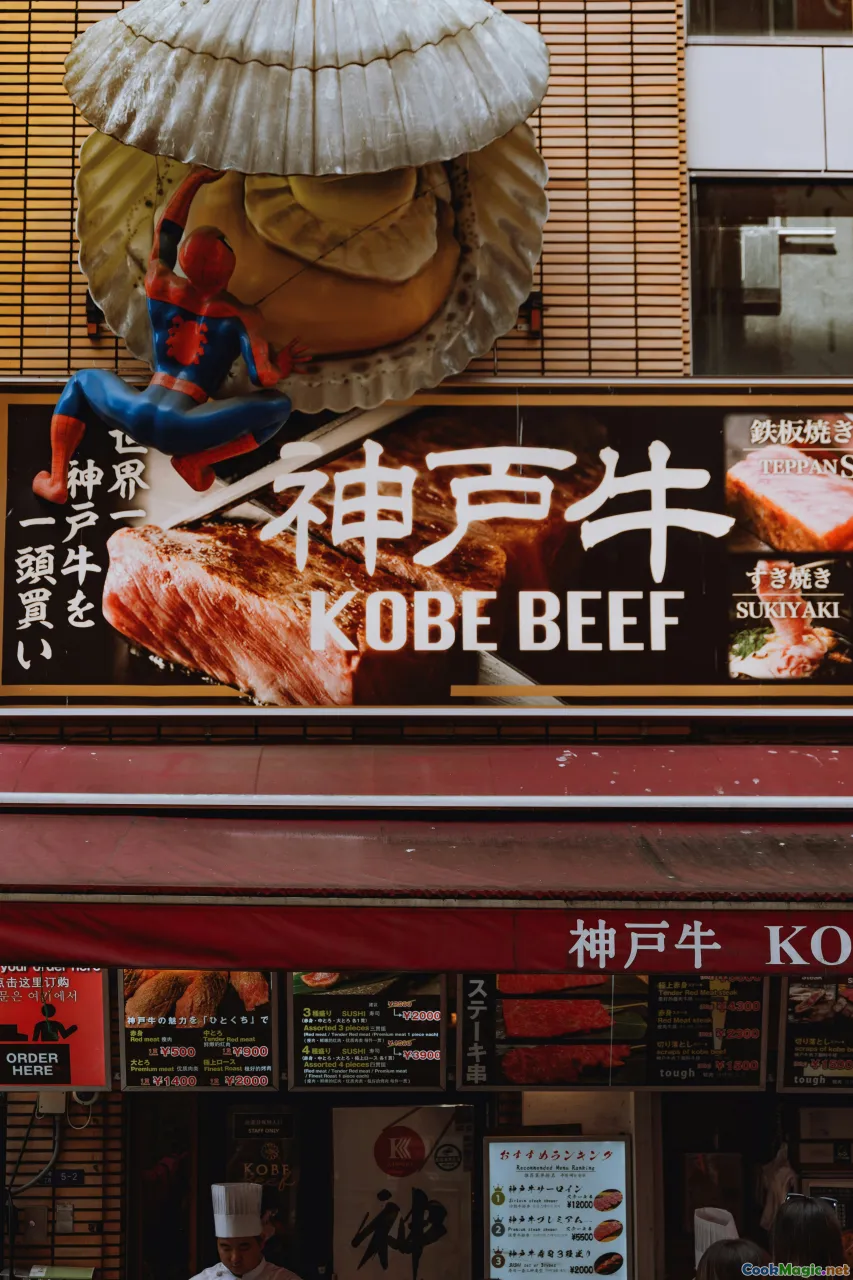
Rendang is meat taught to relax. The cut matters because the sauce asks for time. In Singapore’s wet markets and halal butchers, you’ll see:
- Shin/Shank (tulang): कॉलाजन-समृद्ध, जिसमें घुलने वाला ग्रैन का स्पष्ट अनाज; दीर्घ煮ने पर जेली जैसी बनावट देता है।
- Cheek (pipi): Tekka Market में मिले तो यह संयोजी ऊतक का चमत्कार है जो custardy बन जाता है।
- Brisket (dada): Fat-laced, flavorful, but watch for the flat vs point ends; the point fares better in long simmers.
- Chuck (bahu): Accessible and reliable, with enough collagen to survive the journey.
- Short rib (iga): For a lusher, celebratory rendang; bones add savor.
In a city where space and time are rationed, some home cooks reach for pressure cookers. Used judiciously, they shorten the tenderizing stage without sacrificing depth. But you must guard the texture: pressure-soften the meat separately with a little salt and daun salam (Indonesian bay leaf) for 20–25 minutes, then release to the pot of rempah and coconut milk to reduce gently. If you pressure everything together, you’ll end up soft, not supple; the sauce will taste steamed rather than coaxed.
Why collagen matters: as it melts, gelatin hums with a tongue-coating smoothness that binds to the coconut oils and the toasted coconut solids. The liquid phases unify, making the dish feel richer than the calories suggest. This is culinary chemistry in a sarong.
For Ayam (chicken) rendang, families often choose thighs and drumsticks. The meat needs less time; you aim for a half-dry glaze instead of a long, tannic reduction. Some add a splash of asam jawa (tamarind water) to balance the gentler poultry flavor. The bones moan softly into the sauce.
Coconut Alchemy: Santan, Kerisik, and the Long Slow Darkening

Coconut is how rendang remembers the tropics. You’re talking layers:
- Santan pekat: thick first-press coconut milk; a squeeze from the freshly grated coconut with minimal water.
- Santan cair: thinner second press; milky, sweet, used for volume and a longer simmer.
- Kerisik: grated coconut toasted until chestnut-brown, then pounded into an oily paste; it’s the bass note, the nutty authority.
In Singapore, if you can’t squeeze your own santan, the Kara brand is a common staple; Ayam Brand is fine; the trick is shaking the box and warming the milk slightly so the fat disperses. But if you can visit the coconut man—Tekka Market has one, Geylang Serai another—you’ll taste the difference in perfume and mouthfeel. Fresh milk has a greener, sweet-nut fragrance that packets don’t bother with.
Toast kerisik in a dry pan on low heat. It will go from pale to blonde, then suddenly brown; stir constantly, breathing in the scent of a tropical woodshop. Families describe the ideal kerisik color differently: some prefer kopi-O (almost black), others kaya-toast brown. The darker you go, the more bitter the edge; your gula Melaka will balance it. Pound the toasted coconut while it’s warm so the oils release; you want a damp, clumpy paste that smudges the mortar.
On the stove, after pecah minyak, pour in santan cair first; it buys you time to coax the meat. Add bruised lemongrass, torn kaffir lime leaves, a knot of turmeric leaf. Slip in asam keping if your family likes tang; others prefer squeezed asam jawa later, so the sourness stays bright. Bring the pot to a lazy blink, not a boil. Stir in one direction every few minutes, scraping caramelizing bits off the kuali’s curves. If coconut curdles, you were too fierce: lower the heat, stir gently, and add a little more coconut milk to persuade it back.
Gula Melaka is not there to make things “sweet”; it’s there to round the bitterness from dark kerisik and turmeric’s barky edge. Use a modest knob, shaved with a knife—taste, stir, wait. You’re not seasoning a stew; you’re conducting a slow choir. The sauce should reduce from milky to lacquered, the oil turning a sunset red from chilies and turmeric bleeding their pigments.
Aunty Rosnah’s Open House Rendang (A Story and a Method)

Rosnah lives in a four-room flat in Bedok North, her corridor a gallery of ferns and wind chimes. She makes rendang the day before her open house, so it can rest overnight and settle into itself. She cooks in a battered kuali inherited from her mother—pocked with time, swear words burnt into the rim, the bottom black and seasoned. “Periuk baru tak sedap,” she jokes: new pots don’t taste good.
Her method is measured in minutes and gossip. Here is her ritual, written as precisely as I can while staying faithful to her rhythms:
Ingredients for 8–10 servings:
- 2.5 kg beef shin, cut into generous cubes (about 5 cm).
- Oil (ideally coconut oil) for tumis: 120–150 ml.
- Rempah paste (see earlier proportions) plus 2 extra lemongrass stalks, bruised.
- 800 ml thick coconut milk (first press or packet equivalent) + 600 ml thin coconut milk.
- 5 kaffir lime leaves, bruised.
- 1 turmeric leaf, knotted.
- 2 asam keping slices, or 2 tablespoons tarmarind water, to taste.
- 150 g kerisik, toasted and pounded.
- 25–30 g gula Melaka, shaved.
- Salt to taste (start with 1.5 teaspoons, adjust later).
Steps:
-
Marinade with modesty: Toss beef with 1 teaspoon of salt and a tablespoon of the rempah. Let sit while you toast the kerisik and set up the pot. This pre-salt isn’t about deep flavoring; it’s osmosis insurance for even seasoning.
-
Pecah minyak with patience: Heat oil in the kuali until it loosens like water. Add the rempah in two additions, to avoid crowding and lowering the heat too fast. Stir, scrape, and listen until the paste yields oil and darkens. Salt lightly. Drop in the bruised lemongrass.
-
Invite the meat: Add the beef and turn to coat every piece in paste. The pot will go quiet for a few minutes as the meat chills it; keep the heat on medium. When you see the paste clinging glossy to the meat and the edges sizzle again, proceed.
-
Drown and whisper: Pour in thin coconut milk first, just enough to submerge 75% of the meat. Add lime leaves and knotted turmeric leaf. Bring to a low, steady simmer. Stir every 5–7 minutes, scraping the bottom. This stage takes 60–90 minutes. You’re watching for the meat to slacken.
-
Thicken and deepen: Add thick coconut milk, kerisik, and gula Melaka. Continue simmering uncovered. The color will deepen; the sauce will thicken and throw oil. Now add asam keping. Once the sauce starts to catch at the sides, lower the heat and stir more frequently. You want dark edges, but you do not want burnt bitterness.
-
Season and stillness: Taste for salt and acidity. You should detect heat, a mellow sweetness, and a citrus-tropical lift from lime leaves. If it’s flat, a whisper more asam or a pinch of salt. Continue until the meat resists the spoon gently—not falling apart, but yielding with a sigh. Total time: 2.5–3 hours from rempah to rest, sometimes more if your heat is shy.
-
Rest overnight: Turn off the heat. Let the pot cool, then settle in the fridge. The oil will rise and set like varnish; flavors will braid.
-
Reawaken: On the day, reheat slowly. The color will be darker, the oil a deeper garnet. Serve with ketupat or nasi impit, cucumber acar, and a shout to the niece to set out the plates. The first spoonful should taste like smoke without fire, coconut without milkiness, heat without aggression—what the elders call “masuk,” meaning the flavors have entered one another fully.
Her secret, confessed with a conspiratorial shrug: she adds two turmeric leaves, not one, and she tears one into thin ribbons. “Bau daun kunyit lain, tau,” she says—the smell of turmeric leaf is different, you know. Not a spice note, but a green, resinous lift that makes the room feel larger.
Variations Across the Island: Tok, Minang, and Homebrew Hybrids

Not all rendang on this island speaks the same dialect. Try the Perak-born Rendang Tok that some families in Jurong swear by. Its signature is a tapestry of dry spices—cinnamon, cloves, star anise, cardamom—dosed more assertively than in Minang rendang. The reduction goes further, sometimes to a near-dry crumble that cloaks beef in a sable coat. The color approaches coffee grounds; the fragrance, like the inside of an antique chest. It’s no accident Tok means “grandfather”—it tastes like time.
The Minang style, exemplified at Rumah Makan Minang or Warong Nasi Pariaman, tends to be deeply reduced but not crumbly-dry, with a polished coconut sheen and a balance that leans toward savory heat, lime leaf high notes, and a clean finish. Kerisik is present, but not in a way that shouts.
In Peranakan households—visit Candlenut and you’ll see how a modern kitchen pays its respects—rendang may come enriched with extra candlenut for body and occasionally a calibrated sweetness from gula Melaka that flatters turmeric’s earthiness. Some green rendang variants, in which green chilies star, yield a milder, herbaceous glow. In Malay homes, green rendang ayam can be a favorite with children: less fiery, more perfumed.
Then there are the resourceful riffs: rendang paru (beef lung) emerges a little chewy, carrying smoke from a prior blanch-fry step; rendang kerang (cockles) briefly cooked so they retain brine and snap, used as a centerpiece at some family gatherings. Purists may frown, but in Singapore, you’ll find people eating what their grandparents could find and afford. The technique persists even when the protein migrates.
Equipment Matters: Kuali, Belanga, and the Quiet Heat
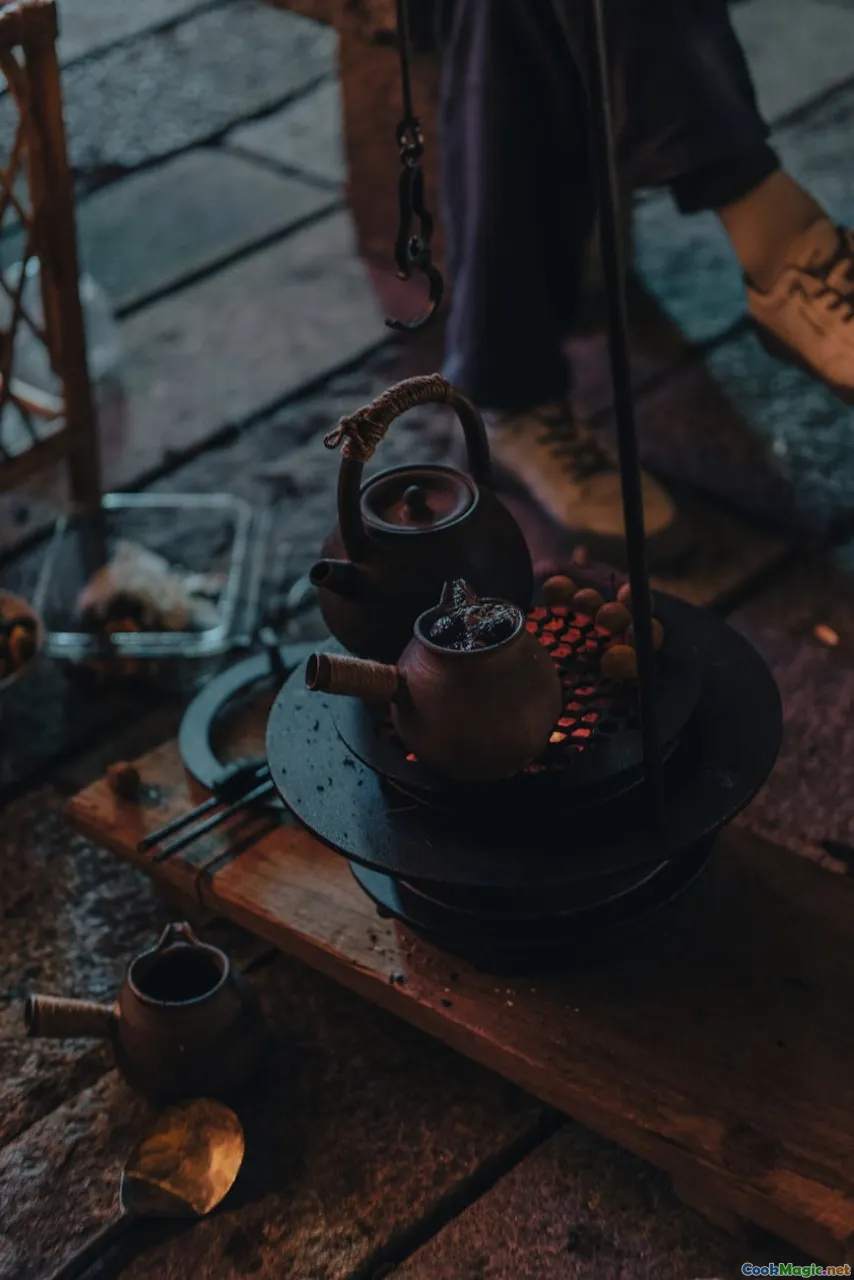
Ask any nenek which pot is right and she’ll point to the one that looks like it has survived a traffic accident. The kuali’s generous surface encourages reduction; its sloped sides concentrate heat and make stirring natural. A heavy-bottomed pot is a close second, but the kuali is a cultural tool as much as a cooking one. Clay pots (belanga) are romantic and practical: they absorb heat and radiate it gently, protecting coconut milk from harsh boiling. If using clay, mind the first heat—gradual—so you don’t crack the pot.
Modern realities mean many of us cook on induction. A flattened, heavy wok pan or Dutch oven works. The trick is to simulate the kuali’s wide evaporation area and to manage heat well. A cast-iron wok on induction is a good compromise, though it is heavy enough to make your wrist complain by hour two.
The senduk kayu is the unsung hero: a wooden spatula with an edge worn to your pan’s curve. Plastic will melt, metal will scrape, silicone will flex too much when the paste fights you. In many households, the stirring tool is family property, absorbing ghost aromas that, if you’re sentimental, you swear you can taste.
Time, Patience, and the City: Adapting Tradition to HDB Kitchens

Rendang is a long conversation with your stove. But many of us live in apartments where open windows mean perfume drifting into neighbors’ laundry. Here’s how families adapt without surrendering soul:
- Batch the rempah: Grind once for two or three dishes. Freeze in ziploc bags pressed flat; they defrost fast and invite impromptu rendang or sambal tumis.
- Control the steam: Use a splatter screen to ease evaporation without painting your backsplash red. A gentle fan facing the kitchen window pushes aroma out.
- Oven finish: Once your sauce has thickened and the meat is near tender, slide the pot (if oven-safe) into a 150°C oven, uncovered. The even heat encourages reduction without scorching; stir every 20 minutes.
- Pressure-cook the meat separately: Reserve the rendang’s reduction stage for the stovetop, where browning and pecah minyak perform better. Your neighbors will smell less, you’ll taste more.
- Respect the clock: Start early. Rendang is not a 60-minute dinner. It’s a domestic ritual best accompanied by a slow radio and the rustle of banana leaves being folded for ketupat in the next room.
Buying Well in Singapore: Markets, Brands, and the Coconut Man

Where you shop shapes how your rendang speaks.
- Tekka Centre (Little India): For beef cuts beyond the ordinary. Ask for shin, cheek, or short rib. Butchers here understand “for rendang” and will slice accordingly.
- Geylang Serai Market: Aromatics central. Daun kunyit, kaffir lime leaves, fresh turmeric, and the freshest grated coconut. Ask the coconut vendor to separate the first and second press if you’re finicky.
- Tiong Bahru Market: Quality produce and herbs. Not all stalls will know daun kunyit; ask gently and describe.
- Haig Road Food Centre vicinity: Spice shops and Malay provision stores with pre-roasted kerisik if you’re in a pinch, though fresh toasting still wins.
- Joo Chiat and Katong: Peranakan grocers with excellent gula Melaka and large, fragrant kaffir lime leaves.
- Mustafa Centre: Spices in bulk—coriander, cumin, fennel; affordable candlenut; stainless senduk if you need a new one.
Brand notes:
- Coconut milk: Kara is reliable, Ayam Brand good. Shake well; warm by setting the packet in warm water before adding to the pot.
- Gula Melaka: Look for “Gula Melaka Asli” in wrapped cylinders; the fragrance should be toffee-caramel, not burnt sugar.
- Kerisik: If buying ready-made, choose vacuum-sealed packs with a warm brown color and oily sheen; re-toast lightly to refresh aroma.
Troubleshooting: Fixing Split Sauces, Tough Meat, or Bland Spice
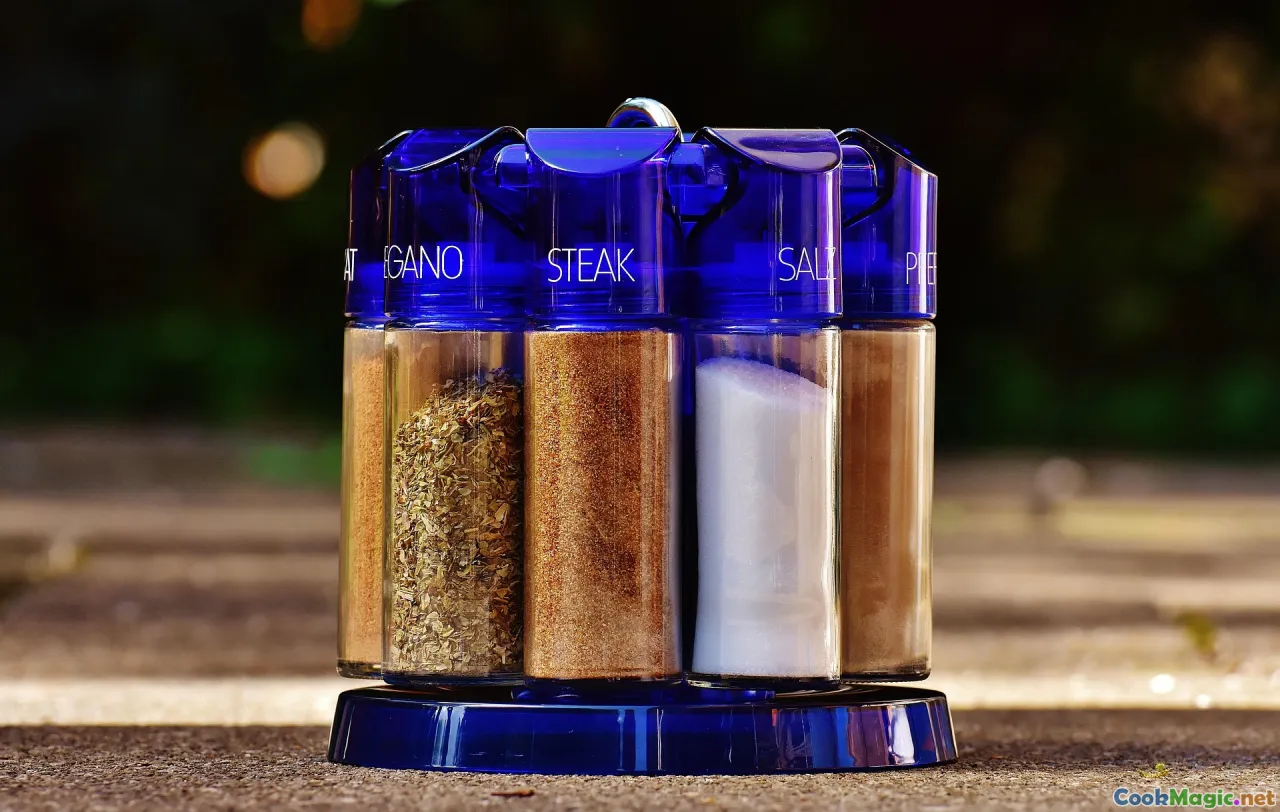
Rendang forgives, but it also keeps receipts.
-
Sauce split early, curdled coconut: Your heat was too high or water too low too soon. Remedy by lowering heat, adding a half cup of thin coconut milk or even hot water, and stirring until the emulsion re-forms. Next time, start with thin milk and pace yourself.
-
Meat is tender but sauce tastes raw: You rushed the rempah. Pecah minyak is not optional. Cook the paste longer next time; for now, continue simmering until the rawness retreats. A touch more oil can help carry the flavors.
-
Meat is tough after hours: Check your cut; some “stew beef” blends include round, which refuses tenderness. If you’re stuck, a covered, low oven stint at 140–150°C for an hour can nudge collagen along without boiling the sauce.
-
Too bitter: Over-toasted kerisik or burnt spices. Mitigate with a measured addition of gula Melaka and a splash of coconut milk, then simmer gently. The bitterness won’t vanish, but it will round off.
-
Too sweet: Balance with asam—either asam jawa water or an extra asam keping slice—and salt. A few more torn lime leaves can freshen the edges.
-
Flat flavor: Salt is often the culprit, but also check acidity. A rendang that hums has a tiny tang. If it’s still dull, your chilies may be stale; use fresher dried chilies next time, and toast your seeds more confidently.
-
Greasy mouthfeel: Rendang should glisten, not pool. Did you add too much oil or not reduce enough? Spoon off excess oil once flavor is set; save that oil—it’s liquid gold for frying eggs or stir-frying vegetables.
Beyond Beef: Chicken, Jackfruit, and Plant-Based Paths

While beef reigns, Singaporean kitchens have long experimented based on faith, health, or budget. Chicken rendang aims for a satiny glaze rather than a dry reduction. Start by marinating chicken pieces lightly with turmeric and salt; tumis the rempah, then add chicken and medium heat until the juices run and mingle. Add santan cair, simmer until just tender, then finish with santan pekat and a modest spoon of kerisik. Chicken overcooks easily; the sauce matters more than the minutes.
Green jackfruit (nangka muda) makes a credible plant-based rendang, beloved by some Indonesian families and increasingly popular here. The fibrous “meat” drinks the rempah and coconut gracefully. Parboil to neutralize any canned aroma; then cook it as you would beef, halving the simmer time. Mushrooms (oyster or king oyster) can join for texture, but avoid watery varieties that dilute your reduction.
For tofu and tempeh, fry lightly before introducing to the sauce; their surfaces will hold flavor better and prevent sogginess. Lean into kerisik and lime leaf to keep the dish buoyant.
Serving, Storing, and the Crescendo of the Second Day

Rendang is never alone on the table. Its perfect partner is restraint: plain rice, ketupat, or nasi impit, which let the sauce speak. During Hari Raya, families queue at the bazaar stalls for lemang—sticky rice cooked in bamboo, sweet with coconut smoke—which, sliced into rounds, offers a platform that soaks and resists like a fine sponge.
Garnishes are few and purposeful. Torn turmeric leaf as a perfumed confetti. Acrid-bright acar of cucumber, carrot, and pineapple, vinegar-sweetened, to refresh the palate. Sambal belacan for the heat-inclined. Some households put out a dry serunding (floss) of coconut and spice, which is cousin to the rendang’s nuttiness and makes rice disappear faster.
If the kitchen is the heart, the fridge is the memory. Rendang improves a day after cooking and holds for up to five days, the oil guarding flavor. Reheat gently; never boil. Freeze in shallow containers for months; thaw overnight in the fridge to preserve texture. The oil that rises is a storyteller; don’t discard it all. Warm a spoonful and drizzle over fried eggs or toss with blanched green beans, and the kitchen smells like last weekend’s laughter.
The Taste of Time: Why Rendang Matters in Singapore

It’s tempting to say rendang is just food: meat, spice, coconut, time. But ask anyone who has stood in a hot kitchen on a humid afternoon, stirring a kuali while listening for the voice of a paste splitting into oil, and they’ll tell you: rendang is the taste of held breath. It is concentration made edible, patience turned glossy.
Singapore is a city that forgets quickly. Buildings go down while you’re still giving directions using them as landmarks. New malls bloom and die. But a pot of rendang ties space to time. It carries Kampong Glam’s old alleys into HDB corridors. It remembers Minangkabau buffalo migrations and translates them into a Shin turned soft under a wooden spoon. It memorializes a grandmother’s hands without saying her name, because the scent is enough to call her back.
In my own notebooks, I have notes from a visit to a family in Yishun—Uncle Din and Makcik Siti—who argued for twenty minutes about the order to add coconut milk. She won, as wives do, and the first-press went in last. The taste was a proof of concept: the sauce shimmered like silk and the meat tasted of beef first, coconut second, spice always. In their living room, kids built ketupat with plastic ribbons, and the television leaked a Hari Raya special that everyone ignored. The rendang did all the talking.
Maybe that’s the last, most Singaporean thing about rendang: it is plural. It is Malay, Minang, Peranakan, Javanese-influenced. It belongs to families who eat with three fingers and those who serve with cutlery polished to mirrors. It sits at hawker stalls like Hajjah Maimunah and in Michelin-lit dining rooms like Candlenut, wearing different clothes but keeping its center intact.
So here is the invitation, whether you inherited a batu giling or a blender: make rendang soon. Make it not because it is fashionable, but because it leaves a scent in your curtains that lasts longer than a season; because it teaches your hands to measure time in glugs of coconut milk and patient stirs; because when you ladle it to someone you love, you are placing hours on a plate, dark and fragrant, a little spicy, and utterly forgiving. In a city that is always moving, rendang is the delicious act of staying still long enough to let oil split, sauce darken, and memories set.









